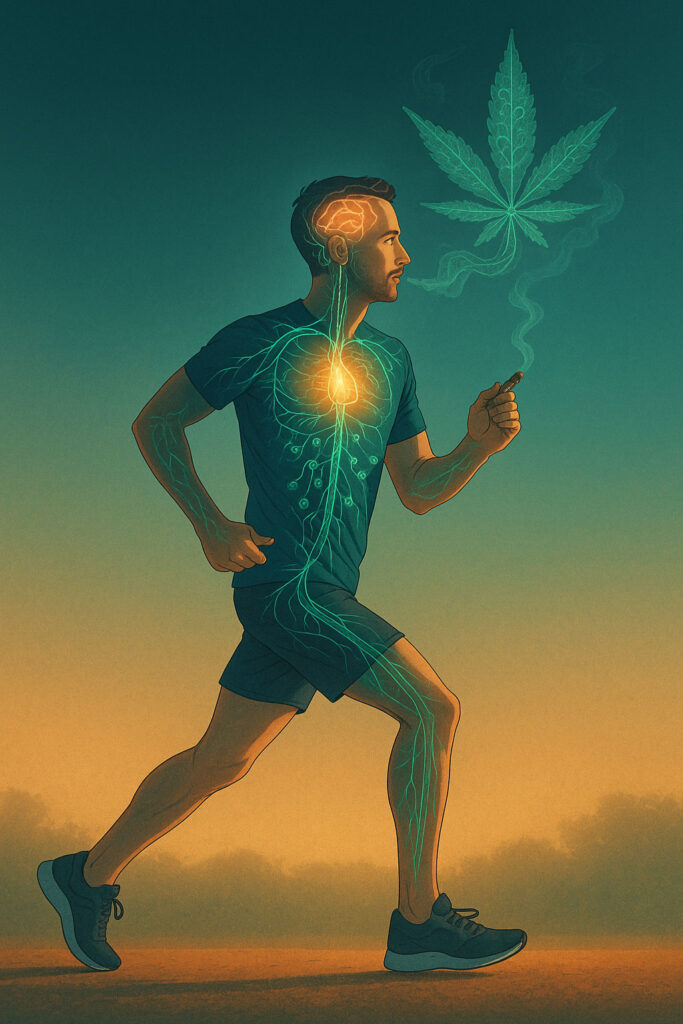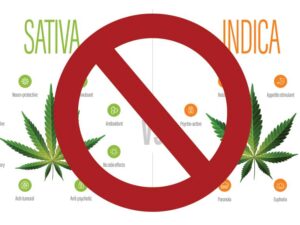
Your Body’s Secret THC: The Real Story Behind the Runner’s High
The Endorphin Myth Revisited
For decades, the narrative was simple: you run, your brain floods with endorphins, and voilà, instant mood boost and a little pain relief. But there’s a problem. Those endorphins, especially the ones we measure in your bloodstream, generally can’t cross the blood–brain barrier in meaningful amounts. They’re good at dulling physical pain, sure, but they’re not sneaking into your head to give you that post-run euphoria.
More tellingly, experiments in humans using opioid receptor blockers have shown that people still report euphoria and reduced anxiety after a run. In simple terms: blocking the endorphin pathway didn’t abolish the high. That tells us endorphins aren’t the full answer.
So scientists looked deeper.
Enter Anandamide, Your Body’s THC
 Meet anandamide, a fat-friendly molecule your body produces. It’s part of your endocannabinoid system. Unlike endorphins, anandamide can cross into the brain and bind to CB1 and CB2 receptors, just like THC from cannabis does.
Meet anandamide, a fat-friendly molecule your body produces. It’s part of your endocannabinoid system. Unlike endorphins, anandamide can cross into the brain and bind to CB1 and CB2 receptors, just like THC from cannabis does.
In animal studies, blocking cannabinoid receptors erased key elements of the runner’s high like reduced anxiety and lowered pain sensitivity. Meanwhile, blocking opioid receptors did not. That was a major clue that the endocannabinoid system is essential for the phenomenon.
In humans, when people run for about 45 minutes at a moderate intensity, their blood levels of anandamide and sometimes 2-AG, another endocannabinoid, rise significantly. And that rise correlates with mood uplift, less anxiety, and reduced perception of pain. Opioid blocking doesn’t stop that.
In sum, the evidence now says the runner’s high is less about opioids and more about cannabinoids, your body triggering a THC-like effect from within.
The Sweet Spot: About 22 to 30 Minutes at 70 Percent Max Heart Rate
Here’s the part that makes this practical. Sustained aerobic exercise, around 20 minutes or more, at about 70 to 80 percent of your age-adjusted maximum heart rate, seems to reliably boost endocannabinoid levels, especially anandamide.
One frequently cited protocol had people run or cycle at 70 to 80 percent of their max heart rate for 45 minutes, and their anandamide levels shot up compared to folks who just sat around. Another study showed that only endurance work in that 70 to 80 percent zone reliably triggered these spikes. Walking or sprinting didn’t do the trick.
So yes, that 22 to 30 minute sweet spot you hear about is rooted in the evidence. It’s not a magic number, but it fits the intensities that seem to reliably hit the endocannabinoid switch.
What This Means
So here’s your headline: your body already knows how to get high, not by chemical injections, but through biology. That post-run calm, clarity, and “in-the-zone” state? That’s your internal THC firing off.
Harvard researchers and other neuroscientists suggest that the runner’s high is driven more by endocannabinoids like anandamide than by endorphins. And that’s a fascinating twist: the very same biological system cannabis lights up is the one your body uses to reward exercise.
So if you like to spark one before you lace up, science says you’re just stacking the deck. A hit of THC to start, a flood of anandamide to finish, and that’s a win-win only your body and cannabis can deliver together.
0 Comments
Leave a reply
You must be logged in to post a comment.









